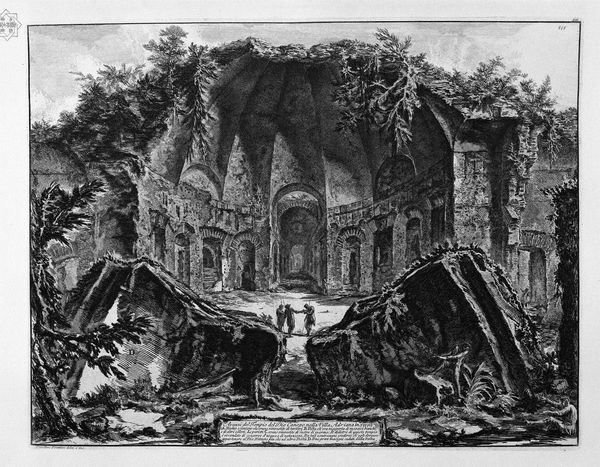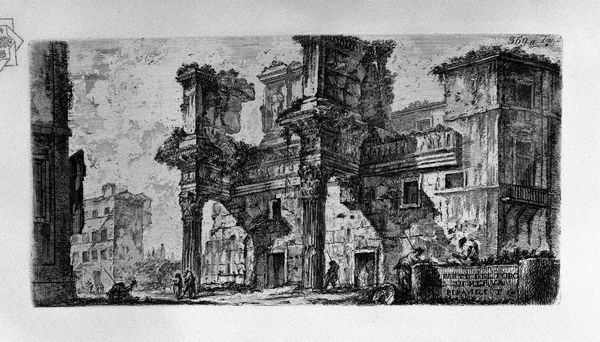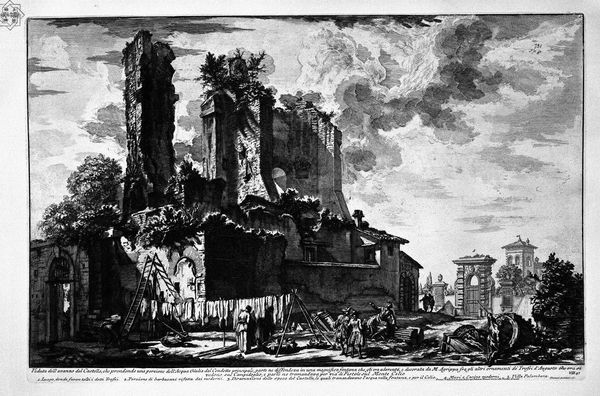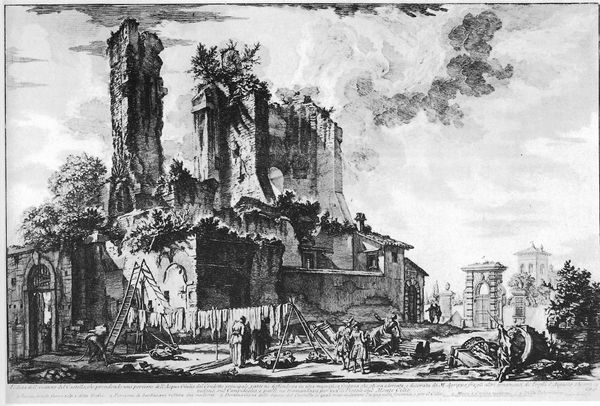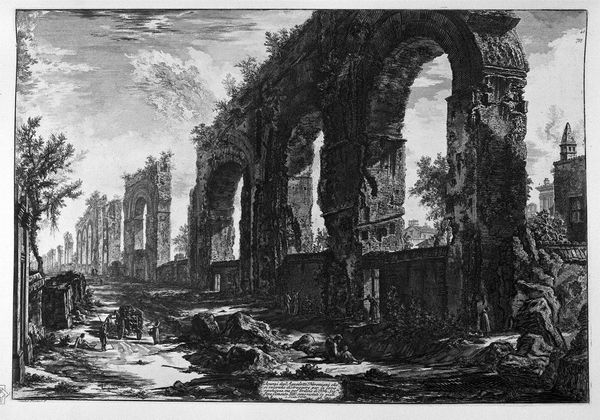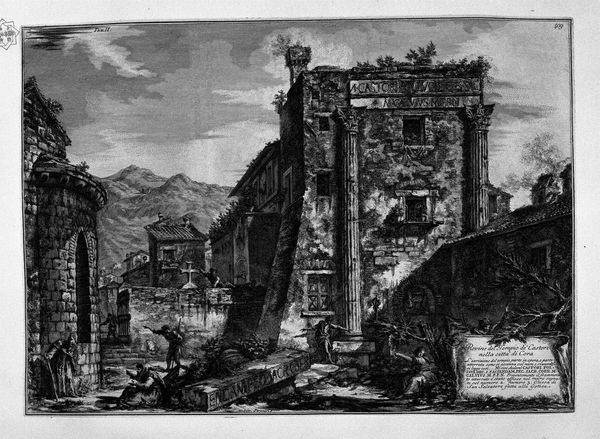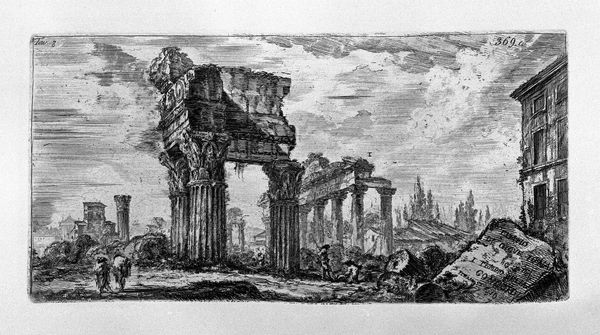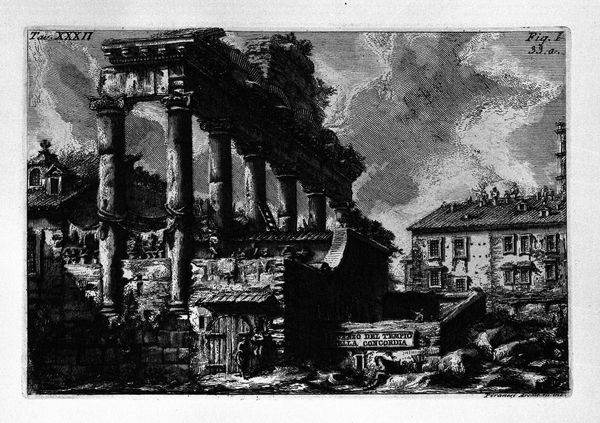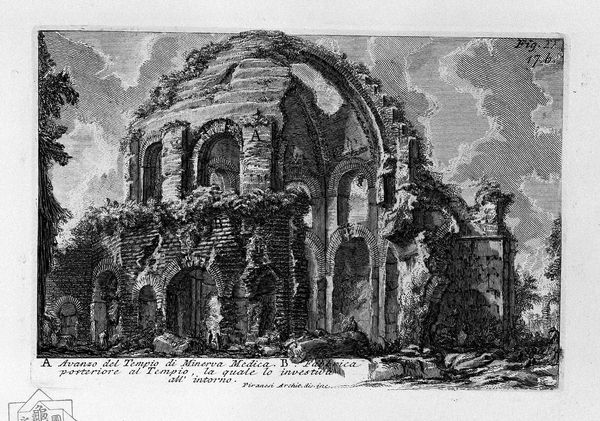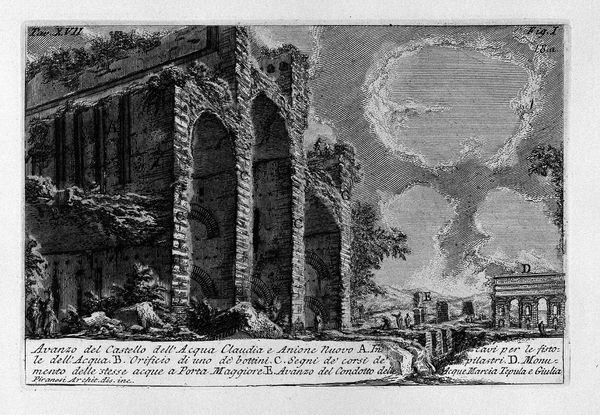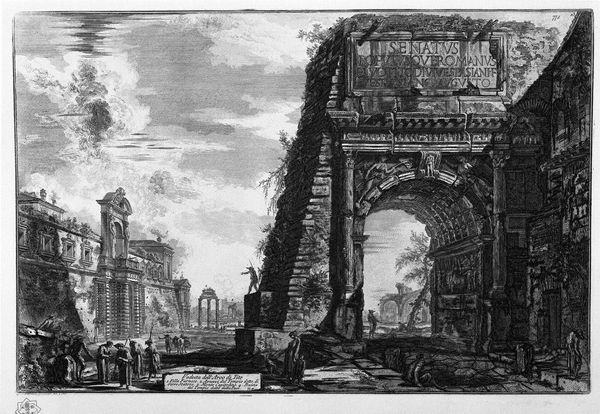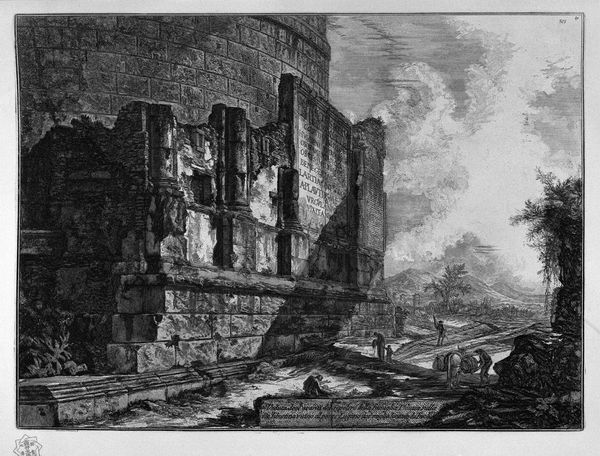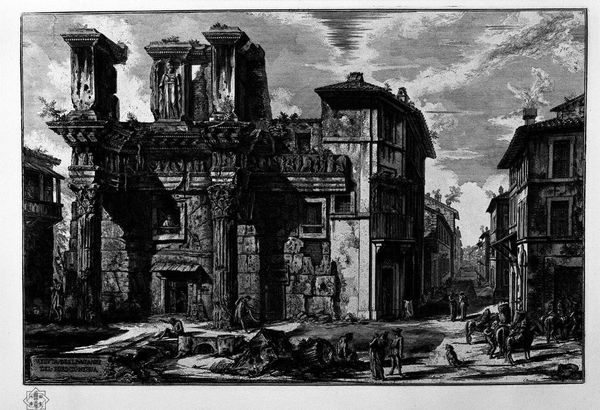
View of the Arch of Augustus d`Aosta (dis Newdigate by R, F inc Piranesi)
0:00
0:00
print, etching, engraving, architecture
# print
#
etching
#
sculpture
#
landscape
#
form
#
romanesque
#
geometric
#
line
#
cityscape
#
history-painting
#
engraving
#
architecture
#
realism
#
statue
Copyright: Public domain
Curator: Let's take a moment to consider this print titled "View of the Arch of Augustus d`Aosta," attributed to Giovanni Battista Piranesi. The piece captures the monument through intricate etching and engraving techniques, emphasizing the play of light and shadow on the ancient architecture. Editor: It feels so theatrical, doesn't it? The arch, grand as it is, is almost swallowed by the darkness. The artist’s use of light to emphasize the textures feels... oppressive. There's something deeply unsettling about how this supposedly triumphant structure feels almost entombed. Curator: Piranesi's pieces, while presenting themselves as faithful records, were often designed to evoke powerful responses. What appear to be objective cityscapes were also often heavily manipulated, presenting Romanticized, idealized—and very grand—interpretations for his patrons. Editor: Right, and what are we really celebrating when we exalt these monuments? This arch commemorates Augustus, an emperor who consolidated power through violence. It represents an ideology of dominance that continues to shape our world, so celebrating the "grandness" almost ignores its darker context. I almost read it as a critique of power and its lasting shadow. Curator: That reading absolutely aligns with contemporary views of public monuments. Now, however, what Piranesi achieves formally in his piece should also be examined; through the skilled deployment of contrasting lights and meticulous rendering of the stonework he presents more than just a likeness. By showing the layers of architectural styles, Piranesi prompts us to consider layers of the state’s power as well. Editor: Layers built on conquest and erasure. Considering how architectural spaces are constructed through unequal access and who gets to claim these spaces of cultural power today continues this grim lineage in some ways. Perhaps that’s the piece’s lasting effect—a dialogue between an older ideal and modern criticism, forcing us to look not just at the image but through it. Curator: Well said. It reminds us that images are never neutral. Every representation of power—every arch, every monument—invites a critical examination of whose history it truly represents, and who benefits. Editor: Precisely. So much to see, so much to think about.
Comments
No comments
Be the first to comment and join the conversation on the ultimate creative platform.
